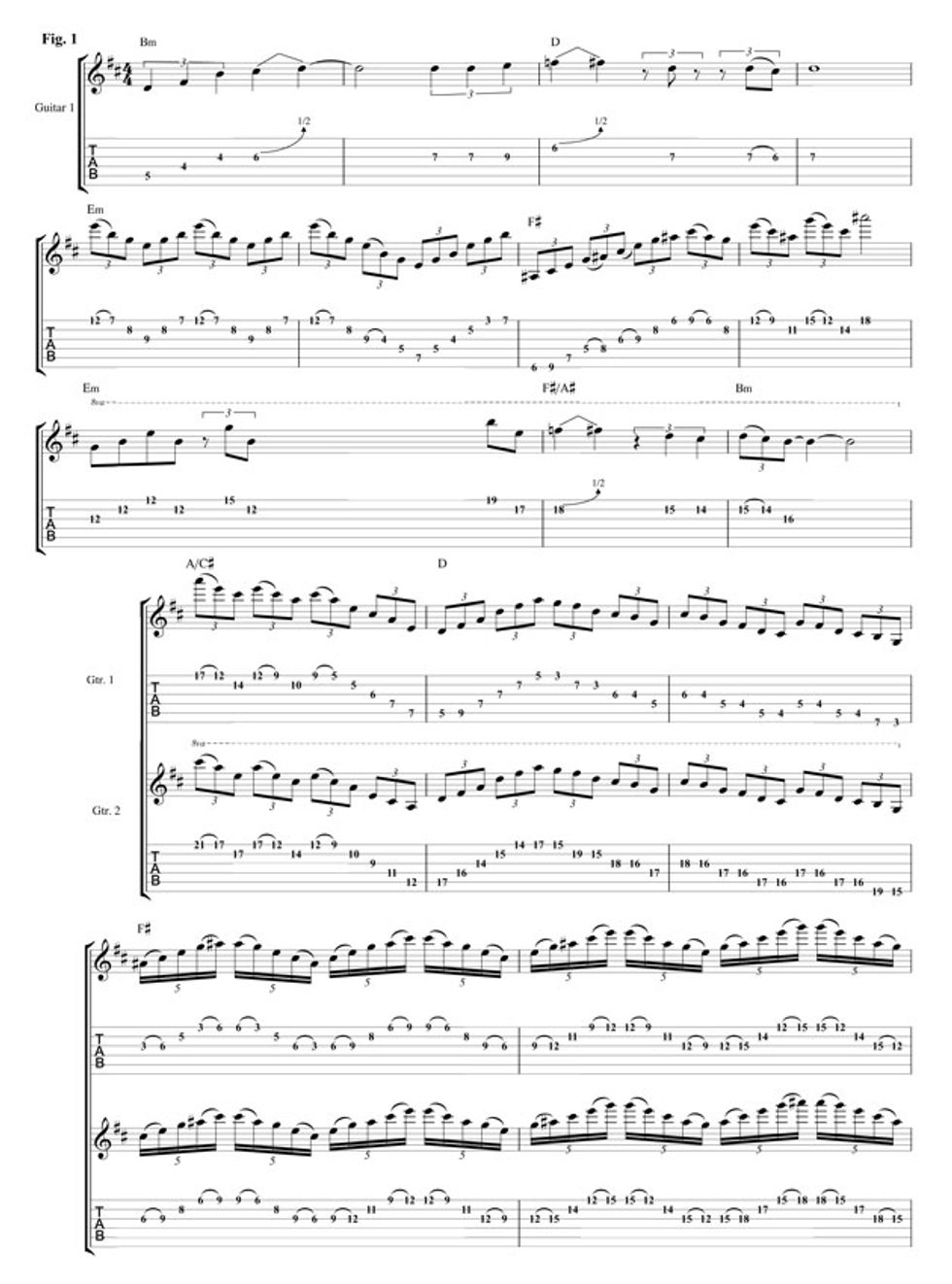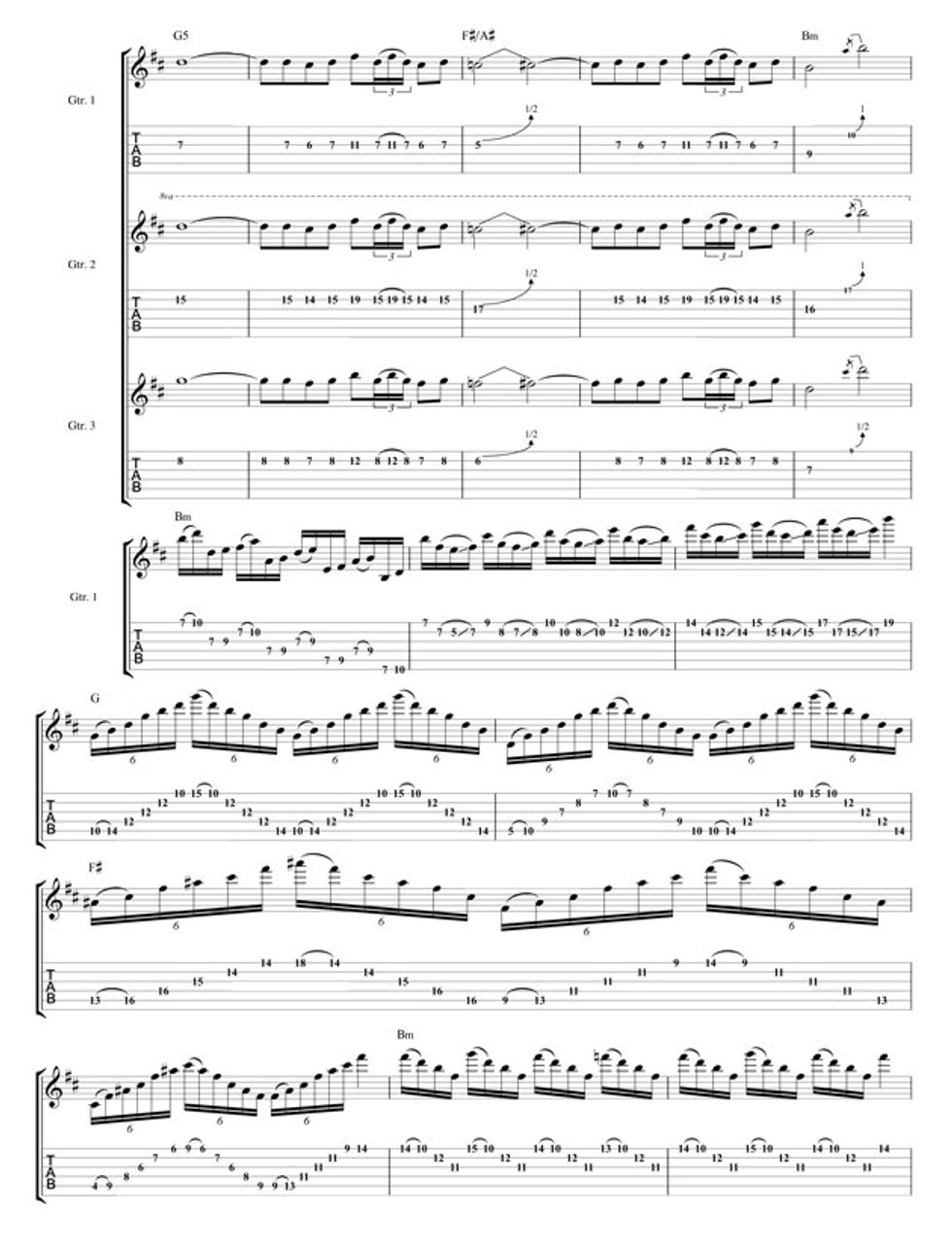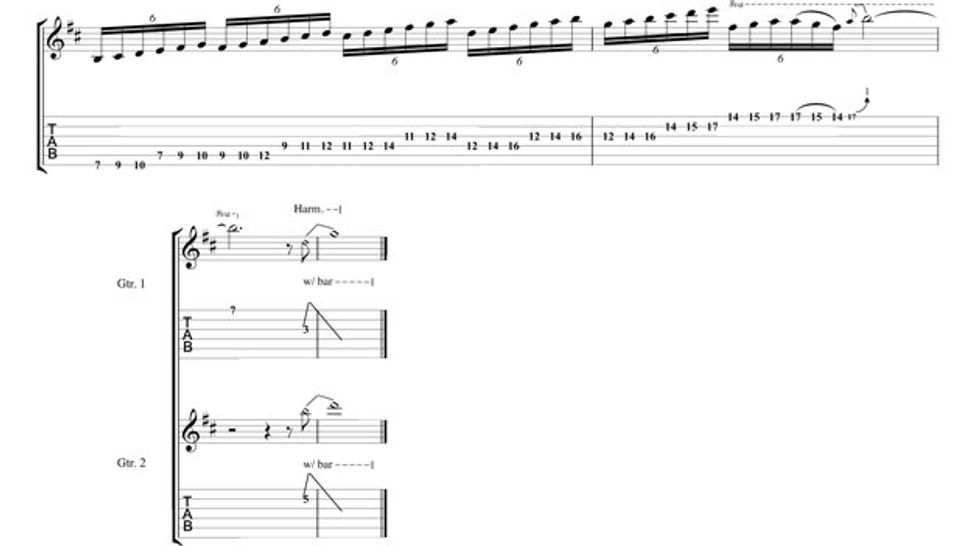Explore the tricks and techniques that made Jason Becker one of the most influential shredders of the Shrapnel era.
Chops: Advanced
Theory: Intermediate
Lesson Overview:
• Develop lines based on symmetrical-sounding scales and arpeggios.
• Learn how to connect arpeggio shapes across the neck.
• Discover how to harmonize multiple guitar parts.
Click here to download a printable PDF of this lesson's notation.
This month we’re looking at the legendary shred guitarist Jason Becker. Hailing from Richmond, California, Becker began playing guitar at the age of five, inspired by his father and uncle, who both played guitar. Becker began by learning Bob Dylan songs on his acoustic and performing them for his friends at school. Soon he moved to electric guitar and after watching The Last Waltz, he began learning Eric Clapton solos note-for-note. It wasn’t long before Becker was diving into Van Halen, Uli Jon Roth, Yngwie Malmsteen—and even Bach and Mozart.
By the time he was 14, Becker was a virtuoso who blended hard rock and heavy metal with classical-inspired harmony and compositions. His father secured him a slot performing at a coffeehouse, and there Becker developed a one-man show. Between his blistering solo guitar performances and stage theatrics, he earned a reputation as a teenage protégé.
At the time, Mike Varney, the head of Shrapnel Records, was looking for talented, unknown guitarists to be featured on his label, so Becker submitted a demo. Varney was floored, not just by Becker’s technique, but his rich, deep knowledge of composition, harmony, and counterpoint. Varney offered Becker a deal with Shrapnel, pairing him up with Marty Friedman to form the speed metal band Cacophony. Becker cut his first Cacophony record for Shrapnel, Speed Metal Symphony,when he was just 16.
It wasn’t long before word of Becker’s abilities began to spread, and he joined David Lee Roth’s band for A Little Ain’t Enough. Around the time of the recording, Becker started walking with a limp. He eventually went for tests and was given the devastating news that he had amyotrophic lateral sclerosis, which is sometimes called “Lou Gehrig’s Disease.” Before the disease totally robbed him of the ability to play, Jason spent time recording, but eventually he was unable to continue as a guitarist. Becker’s story may seem tragic, but it’s also an inspiring testament to the human spirit and Becker’s love of music. To celebrate his amazing life, a full-length movie documentary, Jason Becker:Not Dead Yet, was released in 2012 to critical acclaim.
Becker’s playing style includes fast alternate picking, sweep picking, legato, tapping, hybrid picking, advanced whammy bar phrasing, and an instantly recognizable vibrato. He often employed a technique of landing on a note that was outside the scale—essentially a “wrong” note—and then slowly bending it to become an inside note. This technique helped with tension and release. Japanese music was also a big influence and Becker was known to employ the Japanese pentatonic scale, or Hirajoshi scale, which is based on the tuning of a koto.
The track I’ve composed for this month’s lesson borrows ideas from the Cacophony pieces “Images” and “The Ninja,” and also Becker’s solo composition “Altitudes.” As well as having the full track with all of the guitar parts, I’ve included two backing tracks. Backing track one includes guitar two and guitar three’s harmony parts, which accompany the composed solo for guitar one. Backing track two has no harmony guitars, and only the rhythm guitar is included, so that you can try ideas of your own and don’t have to stick with what I’ve written.
The track kicks off with a very melodic, clean-toned solo based around the B Aeolian (B-C#-D-E-F#-G-A-B) mode with a first inversion B minor arpeggio. It then moves into one of Becker’s signature bending ideas by moving from C# to D. In measure five, we move to a series of sweep-picked E minor arpeggios. This demonstrates one the slightly unusual ways that Becker linked shapes—check out the stretch from the 9th to the 4th fret!
Measures seven and eight move to F# and illustrate how Becker might incorporate the F# Phrygian dominant (F#-G-A#-B-C#-D-E) scale over a V-Im resolution. Over this section we use an A#dim7 arpeggio across all six strings to create an F#7b9 sound, and then traverse up the neck using inversions on the top two strings.
Guitar 2 comes in at measure 12 and harmonizes a descending A major arpeggio on the top two strings before moving to a D major arpeggio across all five strings. This section concludes with a sequence based around one version of the B Hirajoshi (B-C#-D-F#-G) scale. I kick on the distortion in measure 15 for a series of harmonized diminished 7 arpeggios that imply a strong Phrygian dominant sound. The arpeggios are grouped into quintuplets and I use some sweep picking while moving up the neck in minor third intervals. The harmony part for Guitar 2 is the same line, but transposed up a minor third.
Our melodic theme comes in at measure 17 and expands to three different guitar parts with Guitar 1 and Guitar 2 playing in octaves while Guitar 3 adds the harmony. This melody emulates some of the interplay heard between Becker and Marty Friedman, and includes legato phrasing with wide stretches and more outside-to-inside bending ideas. Guitar 1 takes over in measure 23 with a B minor pentatonic (B-D-E-F#-A) phrase that has an angular sound due to some string skipping. I conclude with a diatonic sliding figure that ascends the top two strings.
The next section emulates Becker’s flawless sweep-picking technique and shows how he would link five-string arpeggio shapes. We stick with G major and F# major arpeggios, while moving to a B minor arpeggio near the end of the section. Finally, we finish the example with a sextuplet-based, B Aeolian-infused line and conclude with some harmony squeals.
To emulate Becker’s tone, I used a Music Man Silhouette Special fitted with DiMarzio Area series single-coils in the middle and neck, and a Fast Track Hot Rail in the bridge. Becker’s clean tone sounded like a straight DI sound, so I plugged my guitar directly into my Avalon mic preamp and used the middle and neck single-coils. For the distorted tone, I used a Blackstar Series One 50-watt head feeding an isolation cab equipped with a Shure SM57 mic. This ran into an Avalon valve mic preamp, EQ, and compressor. I also used a Pro Tone signature Jason Becker Distortion pedal, which really delivers his crisp, crunchy tone. Becker’s tone had exaggerated high-end EQ that helped the lead guitar sit within the mix. I also added a healthy dose of stereo delay during the mixing process.




